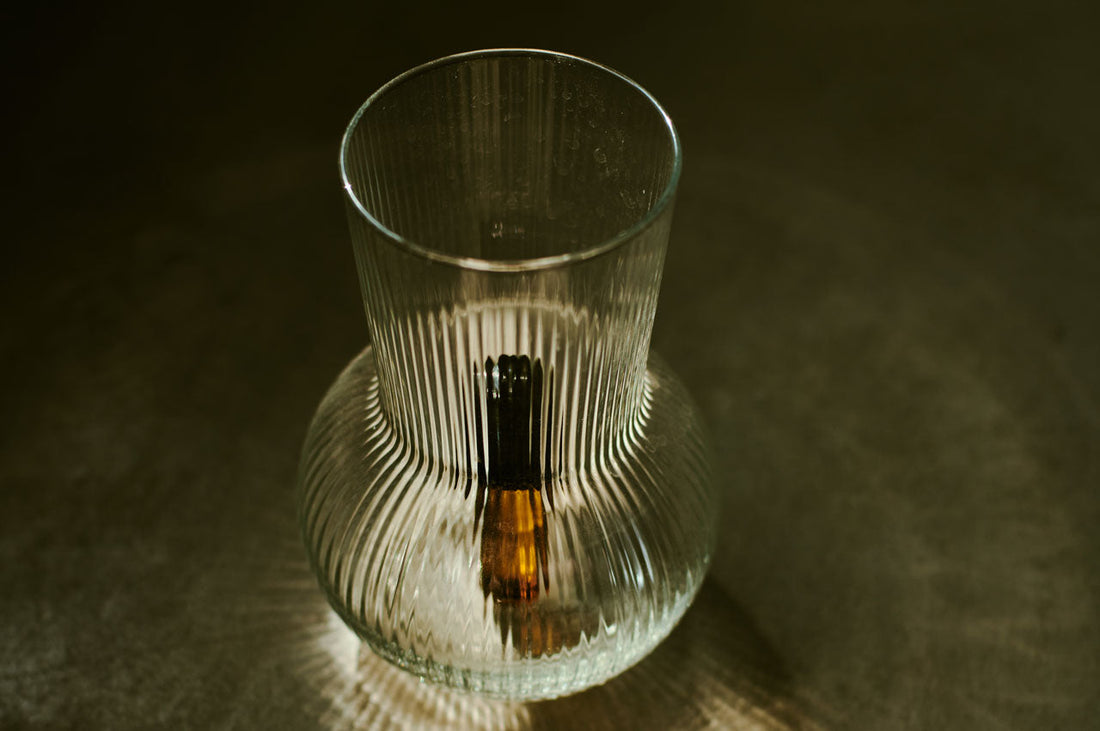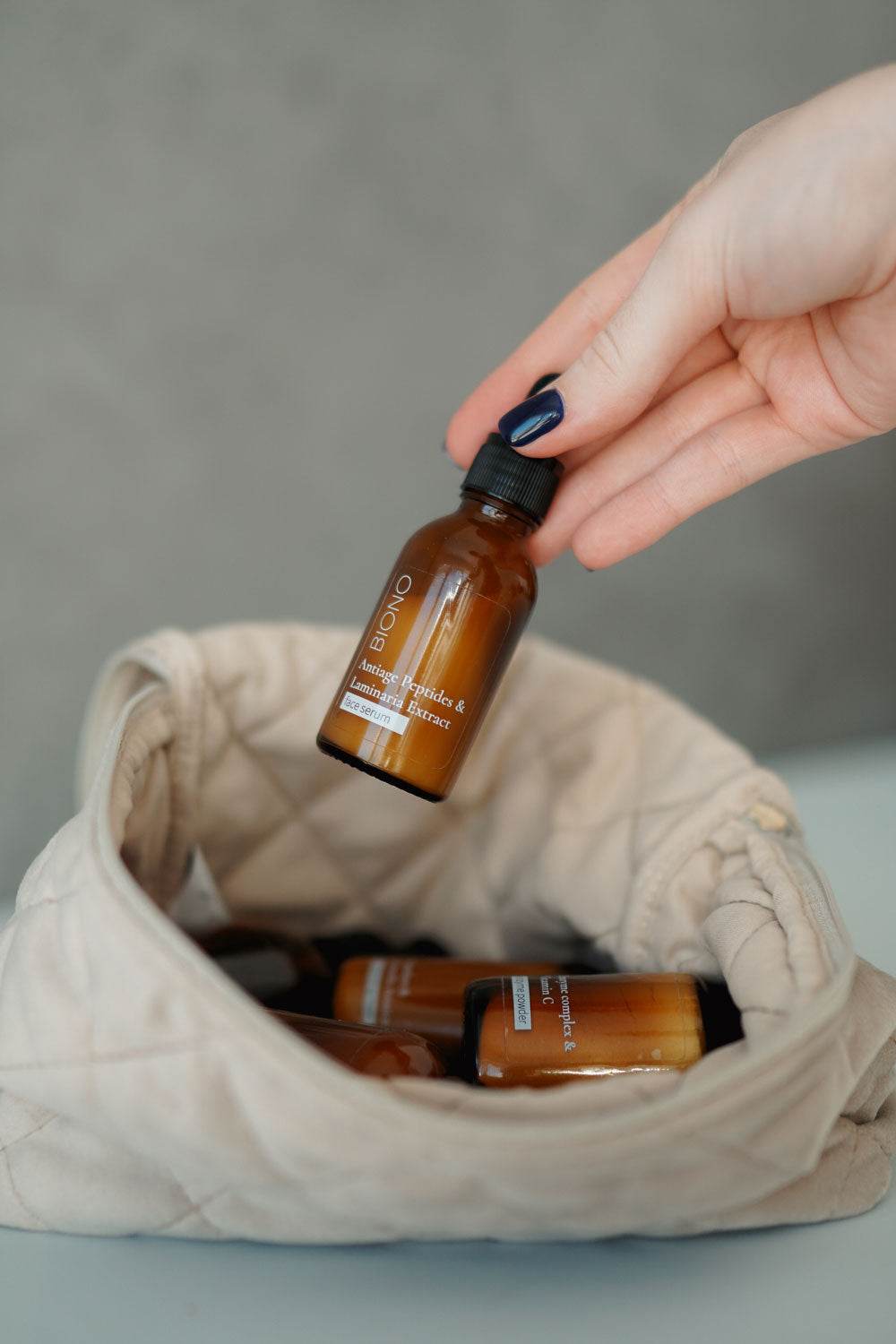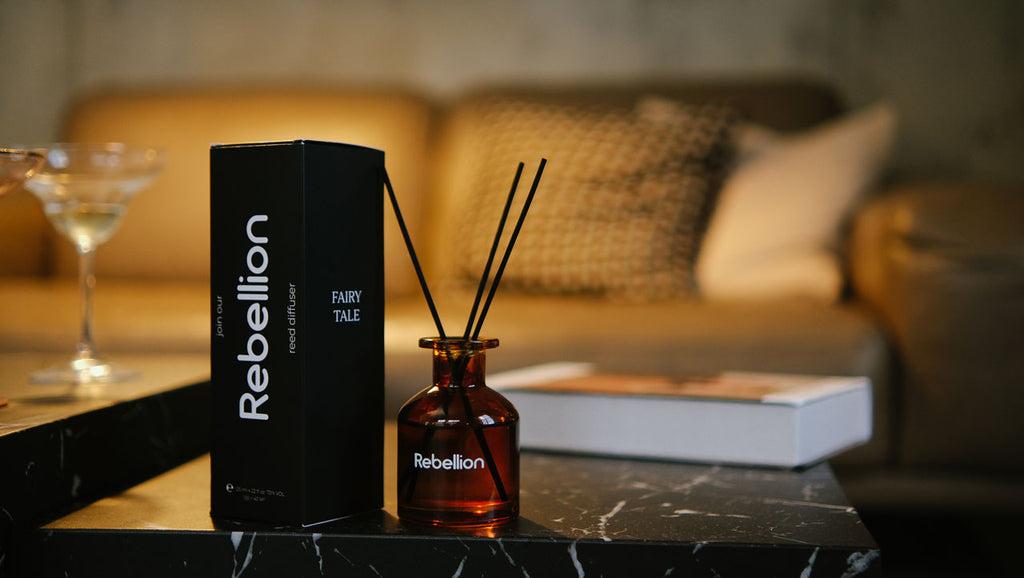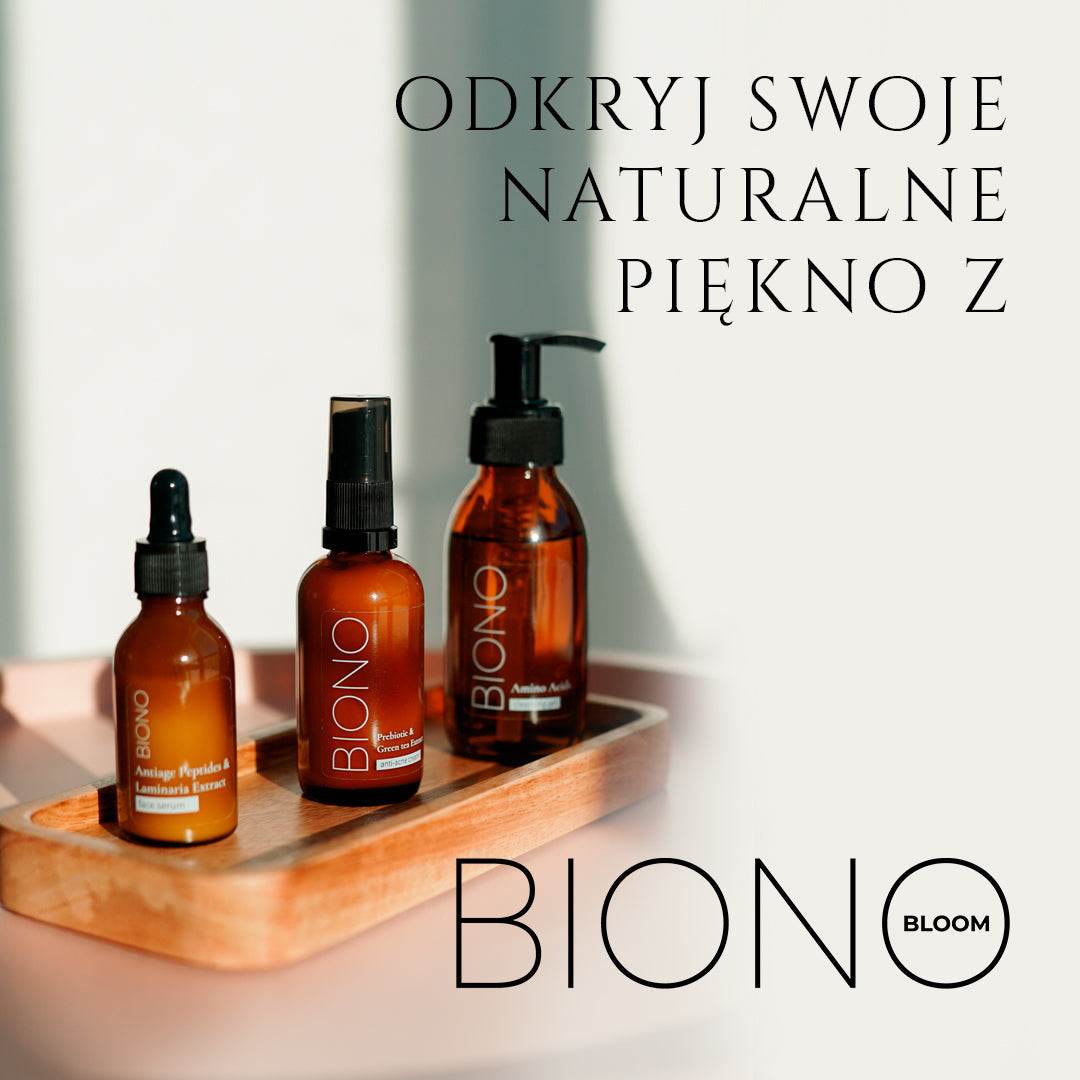
Argan oil in cosmetology: the liquid gold of Morocco that transforms skin and hair
Share
Imagine a tree that grows only in one place in the world, lives for over 200 years, and its fruit produces an oil with such extraordinary properties that the Berbers call it "liquid gold." This is no legend—it's argan oil, one of the most sought-after ingredients in modern cosmetology.
But here's the paradox: even though argan oil is everywhere—in creams, shampoos, serums, balms—most people are using it incorrectly. They buy the wrong products, use it at the wrong time, in the wrong order, and then wonder why they don't see the results everyone's talking about.
Where does the magic of argan oil come from?
Before we start talking about its uses, we need to understand what makes this oil so special. And no, it's not marketing fluff.
The argan tree (Argania spinosa) grows exclusively in southwestern Morocco, covering an area of approximately 8,000 square kilometers. It's a living treasure—UNESCO has designated this area a Biosphere Reserve. These trees are so resilient that they can survive 10 months without rain, and their roots reach 30 meters deep, searching for water.
But the real magic happens at the molecular level. Argan oil contains a whopping 80% unsaturated fatty acids, primarily oleic acid (omega-9) and linoleic acid (omega-6). These acids are responsible for deep hydration and the regeneration of the skin's lipid barrier. Linoleic acid is particularly important because our skin cannot produce it on its own, and its deficiency leads to dryness, inflammation, and premature aging.
The record-breaking vitamin E content—up to 620 mg per kilogram of oil—is a natural "weapon" against free radicals, molecules that damage skin cells and accelerate aging. One drop of argan oil contains more antioxidants than half a cup of green tea. Polyphenols and sterols have anti-inflammatory and soothing properties, which is why argan oil is effective even for acne, although intuitively it might seem that the oil would worsen it.
Squalene is a substance that occurs naturally in our skin, but its production declines after the age of 25. Squalene from argan oil absorbs perfectly and restores skin's elasticity. Sounds like a wish list for every skincare enthusiast, right? But there's a catch – only real, high-quality argan oil has all these properties. And the market is full of imitations.

Where to buy genuine argan oil: a guide to a market full of fakes
Here's the sad truth: according to Moroccan exporters, about 40% of the "argan oil" sold worldwide is either heavily diluted or completely fake. Morocco produces about 4,000 tons of argan oil annually, but the global market sells... over 50,000 tons. The math doesn't add up.
Where to buy authentic argan oil?
Best sources:
- Certified pharmacies and drugstores – look for brands certified by Ecocert, USDA Organic, or COSMOS. Recommended brands: Bioelixire, Naissance, Creamy, Argan Secret. Prices should range between 30-80 PLN for 50 ml.
- Health food stores often have cosmetic sections with certified oils, such as Bio Planet or Organic Farma Zdrowia. Always check the certifications on the packaging.
- Directly from Moroccan cooperatives – if you speak the language or have a trusted intermediary. Women's cooperatives: Tighanimine, Ajddigue, Targanine. Authenticity guaranteed, although delivery times may be long.
- Specialist online cosmetics stores – choose those with at least 50 positive reviews and check the returns policy.
Red Flags – Where NOT to Buy:
- Bazaars and markets (90% fakes)
- Unknown online stores without certificates
- "3 bottles for the price of 1" offers
- Oil in plastic bottles
- Price below PLN 50 for 50 ml of pure oil
- No information about origin and certificates
How to Recognize Authentic Oil: Five Home Tests
The scent test is the first and most important. Authentic cosmetic argan oil has a delicate, slightly nutty scent. If it smells intense, sweet, or even completely odorless, it's a warning sign. A lack of scent means the oil has been heavily refined and has lost most of its nutritional value. An overly strong scent suggests artificial flavorings have been added.
Color and transparency also speak volumes. Real oil has a golden, honey-like color and is transparent. Too light a shade indicates dilution; too dark indicates a culinary oil that is unsuitable for use on the skin. If the oil is cloudy, it has been stored improperly or is spoiled.
The consistency should be thicker than grapeseed oil but lighter than coconut oil. Warm it in your hands and it should spread quickly without leaving a greasy film. An absorption test is another way to verify – apply a drop to the back of your hand and gently massage in. Real argan oil should absorb in 2-3 minutes, leaving skin velvety, not greasy.
The final trick from the pros is the refrigerator test. Place the bottle in the refrigerator for a few hours. Real argan oil will thicken slightly but not solidify completely. If it becomes as hard as butter, it's a blend with other oils. If it doesn't change at all, it has been chemically modified.
Reading Labels Like a Pro
What must be on the label:
- Ingredients: "Argania Spinosa Kernel Oil" (100%, no additives)
- Origin: Morocco (preferably Souss-Massa-Drâa region)
- Method: cold-pressed
- Certification: Ecocert, USDA Organic, COSMOS or Moroccan IGP
- Bottle: dark glass (light protection)
- Production and expiration date (12-18 months)
- Batch number (quality tracking)
What should not be:
- Preservatives (real oil doesn't need them)
- Fragrance additives
- "Mixture of oils" in the composition
- Vague terms like "origin Morocco" without details
How to Use Argan Oil on Your Face: Techniques You Don't Know
Most people use argan oil in the worst possible way: they pour half a bottle on their face, smear it, and wonder why they get pimples. It's time to change that.

Skin Preparation: Half the Battle
Thorough cleansing isn't optional, it's essential. Applying argan oil to dirty skin or makeup is a recipe for disaster. Why? The oil creates a protective layer that seals in everything on the skin. If it's impurities, it will clog pores. If it's makeup, you'll get breakouts.
The cleansing process should begin with makeup removal, if you're wearing makeup, followed by a facial cleanser or foam, and optionally a toner or thermal water. A key point: don't rub your face dry! The best time to apply oil is 2-3 minutes after washing your face, when your skin is still slightly damp, not wet.
Why is this so important? Moisture helps "draw" the oil deeper, and the oil itself "locks" this moisture into the skin—this is called occlusion. The effect is double the hydration. But be careful: if the skin is wet with water droplets, the oil will slide across it and not absorb properly.
Step-by-step application: the professional's technique
How much oil do you really need? For your face alone, 2-3 drops are enough, yes, really just that. If you want to cover your neck as well, use 4-5 drops. For your décolleté, you need 6-7 drops. More isn't necessarily better – excess oil won't absorb and can clog pores.
The "warm and press" technique begins by warming the oil. Pour it into your hands and rub them together vigorously for 10 seconds. This activates the ingredients and facilitates distribution. The first step is to press your hands against your face like a compress and hold for 5 seconds. Don't massage, simply allow the warmth and light pressure to help the oil penetrate the skin.
Then, gently pat the oil in with your fingertips for 30-60 seconds. Don't rub in vigorously, as this stretches the skin and doesn't improve absorption. If you have time, perform an optional lymphatic drainage massage for 2 minutes: from the center of the forehead to the temples, along the eyebrow arch, from the nose to the ears along the cheekbones, from the chin to the ears along the jawline, and always massage the neck from the bottom up.
Finally, wait 2-3 minutes before applying further products. The oil needs time to absorb. This is the perfect time to brush your teeth or brew a cup of tea.
Advanced techniques for various needs
The "sandwich" method works great for dry skin. First, apply a moisturizing serum, wait a minute, then apply 1-2 drops of argan oil, and optionally, finish with a moisturizer. The oil will "seal" the active ingredients in the skin, increasing their effectiveness by up to 30%.
For tired skin, try the "booster" method. Mix 1 drop of argan oil directly with the cream in your hand before application. It's like a turbo boost for your cream – the ingredients penetrate deeper and work more intensively.
Once a week, for intensive regeneration, you can use the "overnight mask" method. Before bed, thoroughly cleanse your face, apply a regenerating serum, and then 5-7 drops of argan oil—more than usual. Massage gently for 5 minutes and sleep on a clean pillowcase. In the morning, your skin will look as if it had just been treated at a beauty salon.
Eye area care requires special attention
The skin around the eyes is only 0.5 mm thick, while the cheek is 2 mm thick, and has virtually no sebaceous glands. It requires a special, gentle technique. In the morning, for prevention, apply one microscopic drop to your ring finger, which exerts the least pressure. "Stamp" it with gentle movements around the eye, from the outer corner to the inner corner, then under the eye. Never rub or stretch this delicate skin.
In the evening, to reduce wrinkles and dark circles, use one drop and massage gently. Massage the bone under the eye from the nose to the temple three times, and the eyebrow arch from the eyebrow to the temple three times, then gently pat with your fingertips for 30 seconds. After two weeks, you'll notice visibly reduced wrinkles and a brighter eye area.
Frequency of use adapted to skin type
For dry skin:
- Morning: 2-3 drops
- In the evening: 3-4 drops
- You can do it every day
For normal skin:
- Choose: either in the morning or in the evening
- 2-3 drops
- Every day or every other day
For combination skin:
- Only in the evening
- 2 drops (dry areas only)
- 3-4 times a week
For oily skin:
- Only in the evening
- 1-2 drops (cheeks only, avoid the T-zone)
- 2-3 times a week
For acne-prone skin:
- Consultation with a dermatologist!
- If you get the green light: in the evening, 1-2 drops, topically
- Start with 1x a week and observe the reaction.
Argan Oil Side Effects: What Influencers Aren't Telling You
Time for an uncomfortable truth. Argan oil isn't a magic elixir without its flaws. It has its limitations and potential side effects, which few people talk about.

Common Side Effects and How to Deal with Them
Acne and clogged pores affect approximately 5-10% of users. Although argan oil has a low comedogenicity rating of 0-2 on a scale of 0 to 5, it theoretically shouldn't clog pores. However, practice shows otherwise. Most often, it's a result of using too much product, not cleansing the skin properly before application, individual reactions, or poor product quality.
What can you do about it? Reduce the amount to just 1-2 drops and observe the reaction. Apply only to damp, clean skin and use the oil only in the evening. Add an acid peel once a week to help keep your pores clean. If there's no improvement after two weeks, argan oil simply isn't for you. Try grapeseed oil, which is lighter, or squalane, which is closest to natural sebum.
Allergic reactions occur in only 1-2% of users, but are possible. Symptoms include itching, red spots, hives, burning sensations, and in extreme cases, even swelling. At-risk groups include people with nut allergies (although technically argan oil comes from the kernel, not the nut itself), those with very sensitive, atopic skin, and those with a history of contact allergies.
Before first use, always perform a patch test. Apply a drop of oil to the inside of your forearm, secure it with a patch, and wait 24 hours. If redness, itching, or a rash occurs, do not use this product on your face.
Worsening of active acne and other problems
Although argan oil has anti-inflammatory properties, it can worsen active, purulent acne. It creates an occlusive layer that can trap bacteria in the skin. Although it has low comedogenicity, any oil can be problematic in severe acne. It can also interfere with topical medications like retinoids and benzoyl peroxide.
If you have active acne, be sure to consult a dermatologist before using argan oil. Possible alternatives include black seed oil or hemp oil, which may be better tolerated. You can also try spot application, only on dry areas like the cheeks, avoiding areas with active lesions.
Overly oily skin with too much product manifests itself as a face that's shiny for up to 6-8 hours after application, makeup that slides and doesn't stay put, and a heavy feeling on the skin. The solution requires discipline: drastically reduce the amount, even to just one drop, apply only in the evening, try the "sandwich method" instead of pure oil, and blot your face with blotting papers 10 minutes after application.
Long-term effects and interactions
Argan oil has a pH of around 5-6, close to the skin's natural pH of 5.5. However, if used excessively without proper cleansing, it can disrupt the skin's natural barrier. Symptoms include increased sensitivity, increased irritation, and unusual, uncharacteristic breakouts.
Prevention includes thorough cleansing twice a day, using toner or thermal water after washing to stabilize the pH, and rotating products – don't use only argan oil, change your cosmetics periodically.
Photosensitivity is very rare, but some people experience increased sensitivity to the sun. This may be due to impurities in low-quality oil, a reaction with other products, or individual skin sensitivities. Always use SPF in the morning, even if you only apply the oil in the evening.
Vitamin E overdose is possible when taking vitamin E supplements, using multiple vitamin E products, and eating a lot of vitamin E-rich foods. Argan oil has an extremely high vitamin E content, making it easy to exceed safe doses. Symptoms of overdose include headaches, fatigue, stomach problems, and skin rashes.
When to stop immediately and see a doctor
Alarm signals requiring immediate consultation:
- Severe allergic reaction (swelling, difficulty breathing)
- Acne worsening despite discontinuing use
- Persistent rash 48 hours after the last application
- Severe burning or pain
- Skin infection (suppuration, fever)
During pregnancy and breastfeeding, cosmetic argan oil is safe for external use, but avoid the nipple area while breastfeeding. If you're taking medications, especially retinoids like Accutane or Roaccutane, the oil may be too harsh and requires consultation with a dermatologist. Photosensitizing medications require extra caution when using SPF.
Argan oil for hair: from dry ends to luxurious mane
Hair is the second-best use for argan oil. But again, most people do it wrong and don't utilize the full potential of this miracle ingredient.
Why Hair Loves Argan Oil at the Molecular Level
Hair's structure is a complex sandwich composed of three layers: a core made of keratin in the center, a cortex layer constituting the bulk of the hair, and outer cuticles, which are protective scales. Problems begin when the cuticles lift, causing hair to become rough, dull, and tangled.
Argan oil smooths the cuticle, creating a smooth surface. Its small molecules penetrate the cortex, reaching the deeper hair structures. It delivers vitamin E directly to the hair structure, repairing damage from within. It protects against the high temperatures of blow-dryers and straighteners by creating a thermal barrier. The temperature at which argan oil protects hair reaches up to 220°C.
Five proven methods of using oil on hair
1. Thermal protection before styling
As a heat protectant before styling, argan oil can replace expensive heat protectant sprays and works just as well, if not better. Apply it to damp, not wet, hair, using 3-5 drops, depending on length. Warm the oil in your hands, apply from mid-length to ends, and comb through with a wide-toothed comb before blow-drying or styling.
2. Serum for ends (daily use)
End serum is a lazy method that delivers spectacular results. Use it on dry hair, after washing, or in the morning before going out. Warm 2-3 drops in your hands and apply only to the ends, the last 10-15 cm of hair. The result is shiny, healthy-looking hair without weighing down the roots.
3. Deeply regenerating mask (once a week)
A deeply regenerating mask once a week is a must-have for very damaged hair. Apply 1-2 tablespoons of oil (depending on the length) to dry, not wet, hair. Apply in sections from mid-length, comb all hair upwards, and put on a plastic cap and wrap in a towel to intensify the effect. Leave on for at least 2 hours, preferably overnight, then rinse with shampoo; sometimes you need to wash twice.
How often to use the mask: Very damaged hair needs it twice a week for a month, then once a week. Moderately damaged hair needs it once a week. Healthy hair, for preventative care, needs it twice a month.
4. Addition to conditioner/mask (booster)
As an addition to a conditioner or mask, argan oil acts as a booster. If you don't have time for a long mask, mix your favorite conditioner with 3-5 drops of argan oil directly in the palm of your hand. Apply as usual, and the effect will be as if your standard conditioner were acting as a premium mask.
5. Oil for the scalp (for dryness and dandruff)
Oil for the scalp may seem controversial, but it's actually recommended for dryness and dandruff. Part your hair into sections and apply the oil directly to the scalp using a pipette or your fingers. Massage with your fingertips for 5-10 minutes to stimulate blood circulation. Put on a shower cap and leave on for 30-60 minutes, then rinse with a gentle shampoo. Do this once a week.
Do not use this method if you have oily scalp, seborrheic dermatitis or scalp fungus.
Dosage of oil according to hair length
Short hair (shoulder length):
- Serum for ends: 2 drops
- Thermal protection: 3-4 drops
- Full-length mask: 1/2 teaspoon
Medium hair (shoulder blade length):
- Serum for ends: 3 drops
- Thermal protection: 5-6 drops
- Full-length mask: 1 teaspoon
Long hair (waist-length):
- Serum for ends: 4-5 drops
- Thermal protection: 7-8 drops
- Full length mask: 1.5 tablespoons
Very long hair (below waist):
- Serum for ends: 6 drops
- Thermal protection: 10 drops
- Full-length mask: 2 tablespoons
Remember, these are starting guidelines – observe your hair and adjust the amount accordingly. Thinner hair will need less, thicker hair more. The key is finding your own ideal ratio.
The most common mistakes that sabotage results
Applying oil to wet hair is a cardinal mistake. Water and oil don't mix, so the oil will slide across the surface instead of being absorbed. Always lightly towel-dry your hair before applying oil. Hair should be damp, but not dripping wet.
Applying oil to the roots of your hair, unless you have an extremely dry scalp, is a surefire way to avoid greasy, heavy hair. Stick to the rule: apply it from mid-length down, unless you're using a special scalp treatment.
Using too much is a trap everyone falls into when starting out. "More is better" doesn't work with oils. Excess oil won't absorb and will make your hair look stale. Start with a minimum and gradually increase as needed.
Lack of patience is another problem. Argan oil masks require time – at least two hours, preferably overnight. Applying for 15 minutes is a waste of the product and your time. The oil needs time to penetrate the hair's structure.
Applying oil to dirty hair is a mistake, just like applying it to your skin. Oil will lock impurities and styling products into the hair structure. Always apply oil to clean hair – after washing but before drying.
When will you see the effects?
This is a question everyone asks, and the answer depends on the condition of your hair. With hair in good condition, the effect is immediate – shiny, smooth ends after just one application. Slightly damaged hair will show improvement after a week of regular use – less frizz and easier combing.
Very damaged hair requires patience. After two weeks of intensive care, you'll notice your hair is more elastic and less prone to breakage. After a month, the hair's structure begins to rebuild, the ends look healthier, and the overall appearance is more lustrous. After three months of regular use, your hair may be unrecognizable—even very damaged strands regain their vitality.
Storing Oil for Maximum Effectiveness
Argan oil, despite its miraculous properties, is susceptible to degradation. Light, heat, and air are its enemies. Store it in a dark glass container at room temperature, away from windows and radiators. The bathroom is the worst place – humidity and temperature changes accelerate oxidation. It's better to keep the oil in a bedroom or closet.
After each use, close the bottle tightly, minimizing exposure to air. Once opened, the oil stays fresh for 6-12 months. A spoiled oil has a bitter odor, changes color, and deteriorates in consistency – do not use it, as it may irritate the skin and will not provide any benefits.
Argan Oil in Cosmetology: A Summary for the Practitioner
Argan oil isn't just another passing trend in cosmetics. It's an ingredient that has stood the test of time – Berbers have been using it for centuries, and modern science confirms its extraordinary properties. But like any powerful ingredient, it requires knowledge and respect.
The key to success is the product's authenticity. In a sea of fakes and diluted versions, real, certified argan oil is a worthwhile investment. Don't be fooled by the low price – quality comes at a price, and your skin and hair deserve the best.
Application technique is as important as the product itself. More isn't always better – a dropper is your best friend. Two or three drops on the face, and similarly on the ends of the hair. Patience is key when applying, gentle massaging, and time for absorption. This isn't a product you rush through; it's a skincare ritual that requires a few extra minutes.
Being aware of side effects protects against disappointment. If you have acne-prone, oily, or very sensitive skin, approach argan oil with caution. Always start with a patch test and observe your skin's reaction. Not every product, even one as miraculous as argan oil, is for everyone.
Regularity brings results. Occasional use won't reveal argan oil's full potential. It's like going to the gym – one workout a month won't do the trick, but consistent work brings transformation. Incorporate argan oil into your daily routine, adjust the frequency to suit your skin and hair needs, and watch your skincare routine transform.
Final Thought: Argan Oil as a Care Philosophy
Ultimately, argan oil is more than just a cosmetic. It's a fusion of nature and science, tradition and modernity. It's a reminder that the best ingredients often come from places where people have known for centuries how to care for themselves, taking advantage of what their surroundings provide.
Every drop of this golden liquid is the work of dozens of Moroccan women who hand-shell argan nuts and press the oil using traditional methods, passing down their knowledge from generation to generation. By purchasing genuine, certified argan oil, you support not only your skin and hair but also the communities that have protected argan trees and traditional production methods for centuries.
So next time you apply a few drops to your face or the ends of your hair, pause for a moment. Feel the warmth of the oil in your hands, inhale its delicate, nutty scent, imagine the Moroccan sun and eternal trees. This isn't a rush to leave the house—it's a moment for yourself, a ritual that says, "I deserve the best. I take care of myself."
And it's precisely in this philosophy that the true power of argan oil in cosmetology lies. It's not just what it does to your skin and hair—though that is spectacular. It's also how it transforms your approach to skincare, teaching you patience, awareness, and respect for nature and yourself.






